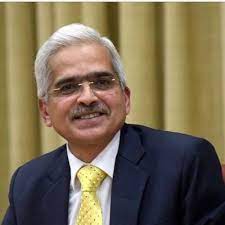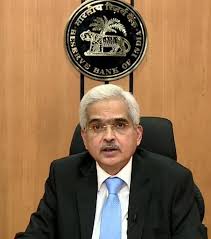Reserve Bank of India governor Shaktikanta Das faces several challenges amidst a spurt in new Covid-19 infections. While keeping in mind inflation targeting, he has to facilitate growth. He has also to provide ample liquidity in the bond market to ensure an orderly evolution of the yield curve.
In his first bi-monthly monetary policy for the current financial year, Das has introduced a secondary market G-sec acquisition programme, or G-SAP 1.0. In his address, he has guided on growth, inflation and liquidity.
Indianbankingnews.com has compiled his speech and interaction with the media in interview format and edited it for its readers.
As on date, moratorium is not needed. We will take a call as the situation unfolds and I would not like to talk about it in advance. You will have to wait and watch out for what steps we will take, going forward.
New situations require new and innovative thinking about dealing with them. Moratorium is a conventional and standard operating tool. In the past year, we have also used non-standard and innovative tools. The G-SAP that we announced today (on 7 April) is also a non-standard instrument. So, going forward, we will use conventional, unconventional and innovative measures, depending on the situation.
Firms engaged in manufacturing, services and infrastructure sector polled by the Reserve Bank in March 2021 are optimistic about a pick-up in demand and expansion of business activity into financial year 2021-22.
Juxtaposition of high frequency lead and coincident indicators reveals that economic activity is normalising in spite of the surge in infections. Rural demand remains buoyant and record agriculture production in 2020-21 bodes well for its resilience. Urban demand has gained traction and should get a fillip with the ongoing vaccination drive.
The recent surge in Covid-19 infections adds uncertainty to the domestic growth outlook amidst tightening of restrictions by some state governments. But in India we are now better prepared to meet the challenges posed by this resurgence in infections. Fiscal and monetary authorities stand ready to act in a coordinated manner to limit its spillovers to the economy at large and contain its fallout on the ongoing recovery. Businesses, particularly private sector businesses, are also better prepared today to deal with the situation and carry on with their activities.
There is concern around rising cases of infections but as Martin Luther King Jr had said and I quote: “We must accept finite disappointment, but never lose infinite hope”.
For the year 2021-22, we have decided to put in place what is termed as a secondary market G-sec acquisition programme or G-SAP 1.0, to give it a distinct character. Under the programme, the RBI will commit upfront to a specific amount of open market purchases of government securities with a view to enabling a stable and orderly evolution of the yield curve amidst comfortable liquidity conditions. The endeavour will be to ensure congenial financial conditions for the recovery to gain traction.
For Q1 of 2021-22, it has been decided to announce a G-SAP of Rs 1 lakh crore. The first purchase of government securities for an aggregate amount of Rs 25,000 crore under G-SAP 1.0 will be conducted on 15 April 2021.
Dr Michael Patra (RBI dpy governor) adds: Giving up an amount upfront helps smart secondary market participants to plan their engagement with the borrowing programme. So, upfront you know how much support is coming from the RBI and can plan your actions accordingly.
It is a judgement call, it is a challenging instrument, because it has risks too. It can go awry and that can bring on tensions, but this is a risk the RBI has taken, keeping its commitment to give an explicit guidance on liquidity.

We are addressing the overall liquidity situation in the market and to ensure that there is an orderly evolution of the yield curve and an orderly evolution of the financial markets also. And, we are not standing in between the demand and supply position (of government bonds).
The supply is something which has to be seen, how it plays out in the current year. Last year, I have given out the number - the total OMO (open market operations) was Rs 3.13 lakh crore. With that OMO, we supported a borrowing programme of Rs 22 lakh crore.
So, in current year also, with a similar size of borrowing, Rs two or three lakh crore worth of intervention in the market cannot be seen as something like completely taking over the government borrowing programme or supporting it in terms of quantum. We do expect enough inflows to come in. And, we'll have to see how the situation plays out in the current year.
The positive externalities of G-SAP 1.0 operations need to be seen in the context of those segments of the financial markets that rely on the G-sec yield curve as a pricing benchmark. In addition, the extension of Held-to-Maturity (HTM) dispensation opens up space for investments of more than Rs 4.0 lakh crore.
We will also continue to deploy our regular operations under the LAF (liquidity adjustment facility), longer-term repo/reverse repo auctions, forex operations and open market operations, including special OMOs, to ensure liquidity conditions evolve in consonance with the stance of monetary policy and financial conditions are supportive for all stakeholders.
The Reserve Bank's endeavour is to ensure orderly evolution of the yield curve, governed by fundamentals as distinct from any specific level thereof. Our objective is to eschew volatility in the G-sec market in view of its central role in the pricing of other financial market instruments across the term structure and issuers, both in the public and private sectors. This is a necessary prerequisite for the nascent and hesitant recovery to firm up and become durable.
Needless to add, two-way movements in bond yields consistent with the fundamentals are quite normal from a market perspective; however, such movements should not be abrupt and disruptive if financial stability has to be preserved.
While headline inflation at 5% in February 2021 remains within the tolerance band, some underlying constituents are testing the upper tolerance level.
Going forward, the food inflation trajectory will critically depend on the temporal and spatial progress of the south-west monsoon in its 2021 season. Second, some respite from the incidence of domestic taxes on petroleum products through coordinated action by the centre and states could provide relief on top of the recent easing of international crude prices. Third, a combination of high international commodity prices and logistics costs may push up input price pressures across manufacturing and services.
Taking into consideration all these factors, the projection for CPI inflation has been revised to 5% in Q4 of 2020-21; 5.2% in Q1 of 2021-22; 5.2% in Q2; 4.4% in Q3; and 5.1% in Q4, with risks broadly balanced.

How well anchored is inflation to remain within the set target of 4%, plus minus 2%?
The inflation targeting framework is now well entrenched. I have also said that the current framework of plus minus 2% gives enough room and policy space to the central bank to act in extraordinary situations such as the pandemic. So, therefore, throughout the last year, and also in the current one, the MPC (monetary policy committee) has looked through certain aspects of inflation. Going forward, we have given out certain projections, the outlook is uncertain, we will see how it plays out.
And, ultimately, at the current juncture, we have said that growth is of paramount importance. While of course, keeping in mind very much that inflation targeting is important, because after all, the primary goal of monetary policy is maintaining a certain level of inflation.
The increase in international commodity prices since the February policy and recurrence of global financial market volatility like the bout experienced in late February accentuates the downside risks.
The upside risks, however, come from (i) the vaccination programme being speeded up and increasingly extended to the wider segments of the population; (ii) the gradual release of pent-up demand; and (iii) the investment-enhancing and growth-supportive reform measures taken by the government.
Taking these factors into consideration, the projection of real GDP growth for 2021-22 is retained at 10.5% consisting of 26.2% in Q1; 8.3% in Q2; 5.4% in Q3; and 6.2% in Q4.
The National Statistical Office (NSO) in its update on 26 February 2021 placed the contraction in real GDP at 8% for 2020-21. Prospects for 2021-22 have strengthened with the progress of the vaccination programme. The recent surge in Covid infections has, however, imparted greater uncertainty to the outlook and needs to be closely watched, especially as localised and regional lockdowns could dampen the recent improvement in demand conditions and delay the return of normalcy.
Against this backdrop, the MPC judged that monetary policy should remain accommodative to support and nurture the recovery. In other words, the stance of monetary policy will remain accommodative till the prospects of sustained recovery are well secured while closely monitoring the evolving outlook for inflation.
